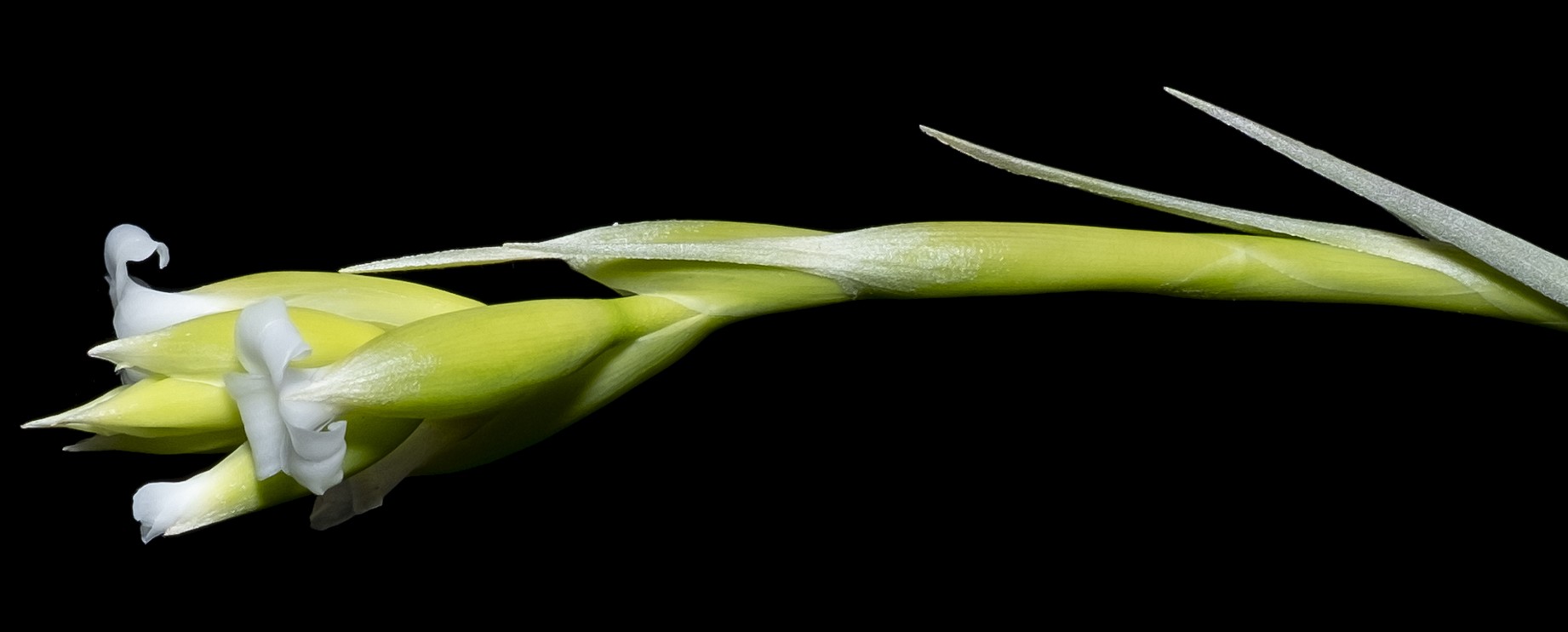

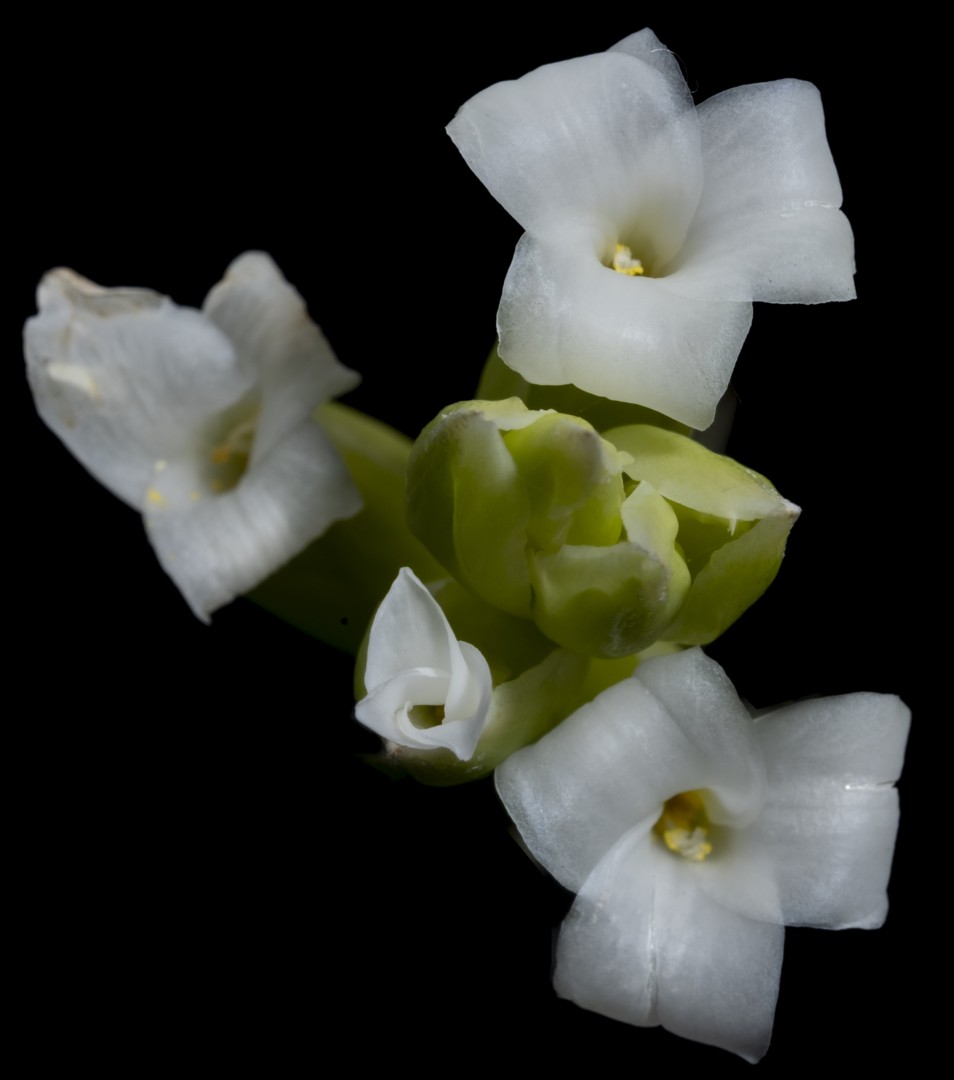
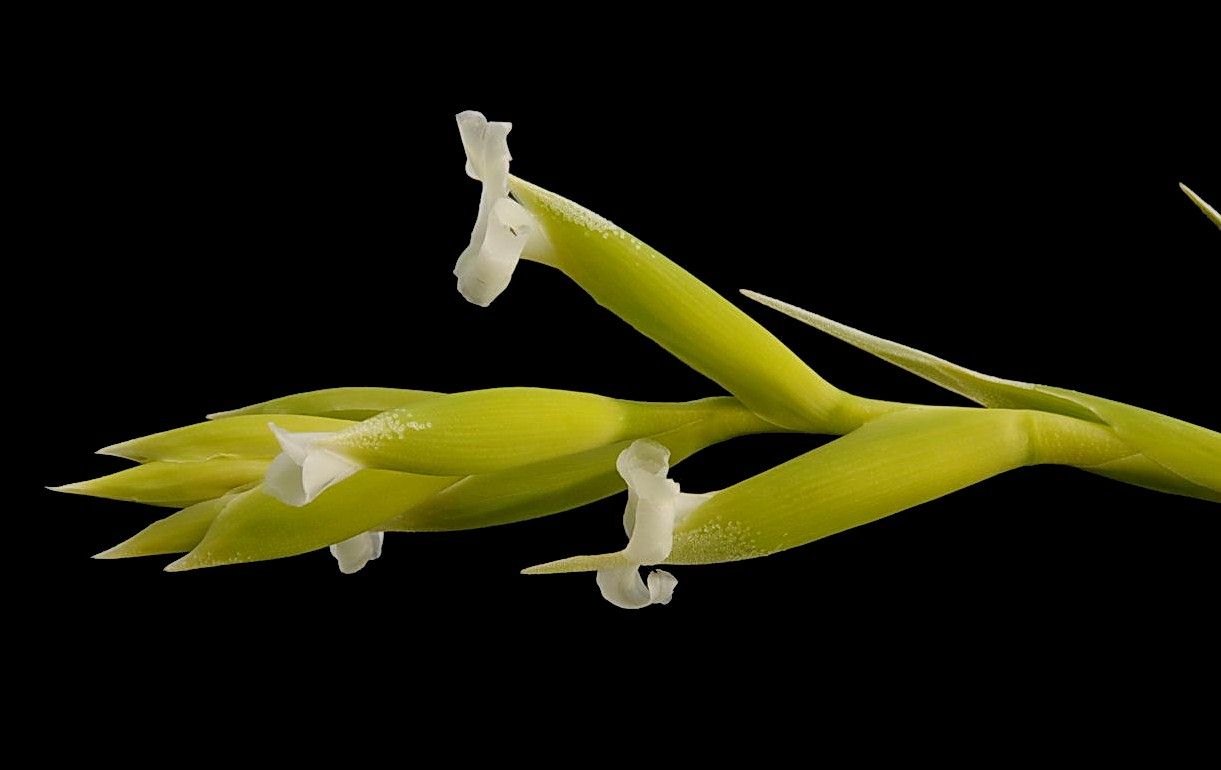

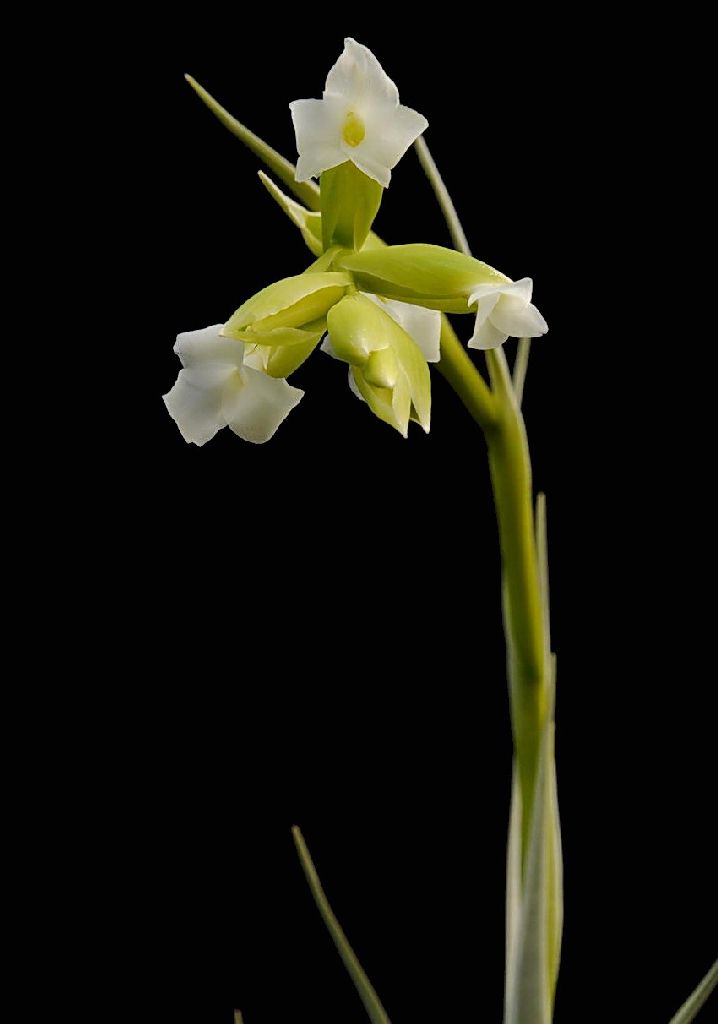
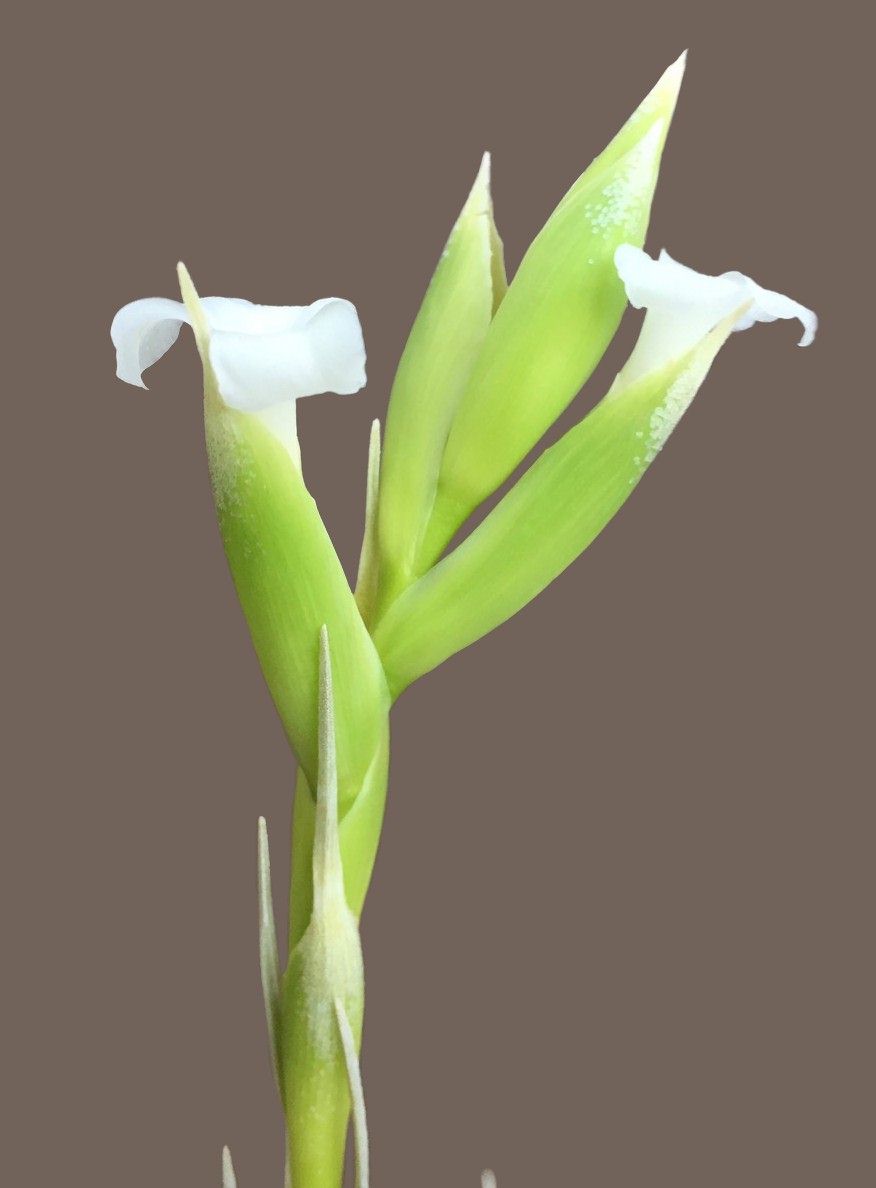


Holotypus-Brasil - Estado do Rio de Janeiro: Montserrat; Pedra Paraibuna, IV-1969, leg. P.I.S. Braga 1556 (RB).
Desc from S&D p828
Plant caulescent; stem 15-20 cm long.
Leaves densely polystichous;
Sheaths reniform, white, thin, glabrous, 11-13 mm long, 20-22 mm wide;
Blades narrowly triangular, attenuate, carinulate, subinvolute, subcoriaceous, 9-11cm long, covered throughout with silvery scales.
Scape erect, 12-14 cm long;
Scape-bracts imbricate, the lower subfoliaceous, the upper elliptic, acuminate. Inflorescence simple, of about 5 polystichous flowers.
Floral bracts slightly incurved, 15-20 mm long; flowers subsessile.
Sepals lance-ovate, symmetric, 9 mm long, the posterior carinate, half-connate;
Petals 28 mm long, white, obtuse, revolute;
Stamens 18 mm long; filaments linear, plicate.
Type. P.I.S. Braga 1556 (holotype RB), saxicolous, Pedra Paraibuna, Montserrat, Rio de Janeiro State, Brazil, Apr 1969.
DISTRIBUTION. Known from the type collection only.
T. nuptialis is characterized by the dense silver indumentum of its leaves and the apex of the bracts, with corolla of white petals, very revolute and bracts of a very clear green.
Undoubtedly, T. nuptialis is similar to T. aeranthos (Loisel) L. B. Smith, differing however, by the most larger size, caudex 3-4 times larger, more rigid and clearly more curved leaves, inflorescence twice as long and with a constant of 5 flowers (in 5 examined specimens).
Tillandsia nuptialis - Ruby Braga et D. Sucre sp. nov. Loefgrenia 35, l5-VIII -1969 in Brom Soc Bull 20(3): 51-52. 1970
Holotypus: Brazil, Estado do Rio de Janeiro, Montserrat, Pedra Paraibuna IV-1969, leg. P. I. S. Braga 1556 (RB)
Whoever drives along the Rio de Janeiro-Brasilia highway may observe at the left side, shortly before arrival at a small place called Morrtserrat which limits the States of Rio Janeiro and Minas Gerais, the huge Pedra Paraibuna extending over several kilometers.
The abrupt slope of this rocky ore mountain has its upper half almost entirely covered with a species of Tillandsia, and this is a brief note concerning this bromeliad which at first seemed unreachable to us.
We made our way by entering a poultry farm and walking through a large corn plantation to the base of the mountain. On the ground we found some specimens but they were in very poor condition, with the inflorescences almost already fructified. Nevertheless, they appeared to be something with different characteristics from what we had ever seen before. Workers at the plantation told us that in bad weather lightning frequently strikes on the cliff, and this could perhaps be the reason for our encountering those Tillandsia plants at its base.
So we left the place but with the intention of returning later, prepared to climb the steep mountain face. When we returned, we did succeed, but the climb up the cliff was hard and long. But it was worthwhile, and we brought back a number of plants.
At flowering time, when about twenty specimens were in bloom, a real party happened in our garden and made us sure that we were seeing a brand-new species. The elegant shape of this bromeliad with the blades and upper part of the bracts densely covered with silver scales and the large pure white flowers make one think of a bride, and, thus, it was named Tillandsia nuptialis.